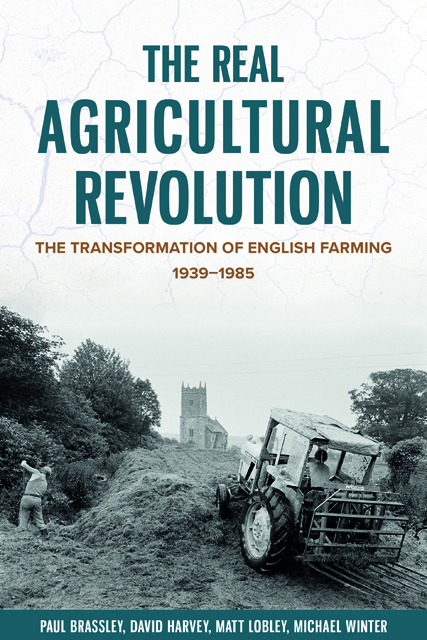Book contents
- Frontmatter
- Contents
- Figures and Tables
- Preface and Acknowledgements
- Abbreviations
- 1 Introduction: Exploring Agricultural Change
- 2 The Organisation of Agricultural Science, 1935–85
- 3 Knowledge Networks in UK Farming, 1935–85
- 4 Agricultural Policy, 1939–85
- 5 Dairy Farming
- 6 Land and Capital
- 7 Labour and Machinery
- 8 Specialisation and Expansion
- 9 The Declining Enterprises: Pigs and Poultry
- 10 Conclusions
- Bibliography
- Index
6 - Land and Capital
Published online by Cambridge University Press: 04 January 2024
- Frontmatter
- Contents
- Figures and Tables
- Preface and Acknowledgements
- Abbreviations
- 1 Introduction: Exploring Agricultural Change
- 2 The Organisation of Agricultural Science, 1935–85
- 3 Knowledge Networks in UK Farming, 1935–85
- 4 Agricultural Policy, 1939–85
- 5 Dairy Farming
- 6 Land and Capital
- 7 Labour and Machinery
- 8 Specialisation and Expansion
- 9 The Declining Enterprises: Pigs and Poultry
- 10 Conclusions
- Bibliography
- Index
Summary
Capital and Land Tenure
As we saw at the end of the last chapter, technical changes often, if not inevitably, needed capital investment of some kind to be put into effect. It is easier to understand why and how changes occurred in this respect between 1939 and 1985 if we remember that capital in agriculture is conventionally divided into several categories, each of which may be provided from different sources.
Capital investment is required on a farm to make the land productive. Some capital items, such as field boundaries and drains, may have been in existence for many years; short-term capital may be needed to pay for storing finished crops until they can be sold. The conventional division is between landlord’s capital and tenant’s capital. The former consists of the land itself and the buildings, hedges, and fences, roads, drains, and so on upon it, all of which are for all practical purposes inseparable from the land, and the money invested in these items is not available for running the farm business. However, since they are so immobile, such items provide good security against which money can be borrowed. They are usually referred to as landlord’s capital, since they are normally provided by the landlord on a tenanted farm. More capital is needed to acquire the machinery and breeding livestock, and it too has to be invested for several years and is not available for day-to-day purposes, so like the landlord’s capital it forms part of the fixed capital of the farm. However, since on a tenanted farm it is normally provided by the tenant, it forms part of the tenant’s capital. The other part of the tenant’s capital is the working capital, which is turned over more rapidly. It is used to pay for the necessary labour and feedingstuffs that must be bought before fattening animals can be sold, or the seeds and fertilisers purchased in the spring before a cereal crop is sold in the autumn. Some writers therefore distinguished between long-term and short-term capital and argued that different sources should be used for each type; in other words, that it would be unwise to use a bank loan that can be recalled at any time to finance land purchase.
- Type
- Chapter
- Information
- The Real Agricultural RevolutionThe Transformation of English Farming, 1939-1985, pp. 163 - 182Publisher: Boydell & BrewerPrint publication year: 2021



